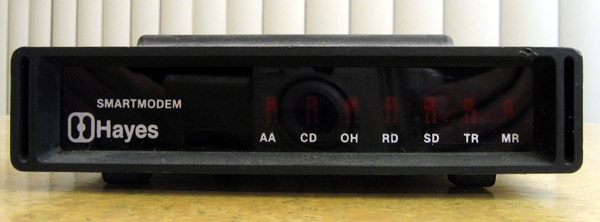The screech of a dial-up modem is unforgettable to anyone who accessed the web in the 90’s. This primitive technology led to the mass adoption of the Internet, giving us access to a seemingly limitless digital world. As long as no one wanted to use the phone.
In the mid-1970s, computer hobbyist Dennis Hayes worked at National Data Corporation setting up modem connections for NDC’s customers. He saw no reason why similar modems couldn’t be made for the Altair PC. In 1977, on his kitchen table, Hayes and his colleague Dale Heatherington built the first PC modem, the catchily named 80-103A. At $49.95 for the bare board it was extremely popular. Hayes and Heatherington quit their jobs and formed DC Hayes Associates.
The 80-103A and its successors, the Micromodem 100 and Micromodem II, were internal modems, which meant a different device for each machine. A universal modem would be a game changer. Heatherington decided the solution was for the modem to operate in two modes, data mode and command mode. In data mode, all information forwarded from the computer was modulated and sent as normal. In command mode, information was instead interpreted as commands. The modem would start up in command mode and change to data mode after receiving three plus signs (+++).
The Hayes Smartmodem was released in July 1981, the first programmable modem that could be used with any computer. The availability of a cheap, easy-to-use modem increased the popularity of Bulletin Board Systems, which in turn increased the demand for the modem. Hayes Microcomputer Products, as the company was then known, was the only player in the market. This couldn’t last. Competitors quickly copied the Smartmodem’s sleek design and the Hayes Command Set that drove it.
The launch of the World Wide Web in 1991 increased demand for dial-up modems exponentially. This growth, fuelled by the very modems invented by Hayes proved their downfall. Hayes Microcomputer Products couldn’t keep pace with the rapid transition from 14k to 56k modems and went out of business in 1999.
When broadband technology was introduced at the turn of the century, routers, network switches, wifi and modems were combined in a single device. Within this device, Hayes and Heatherington’s legacy lives on. The Hayes Command Set remains the basis for controlling most modems to this day.
This is an extract from 100 Ideas that Changed the Web, available on Amazon UK and Amazon US.


One Response to Get off the Internet, I need to make a call